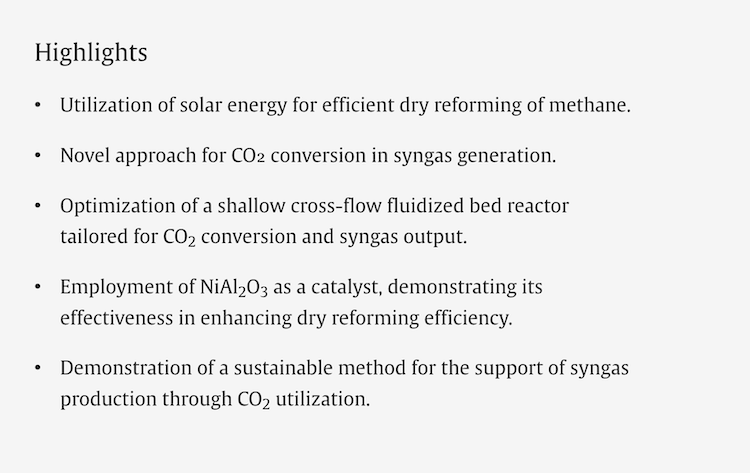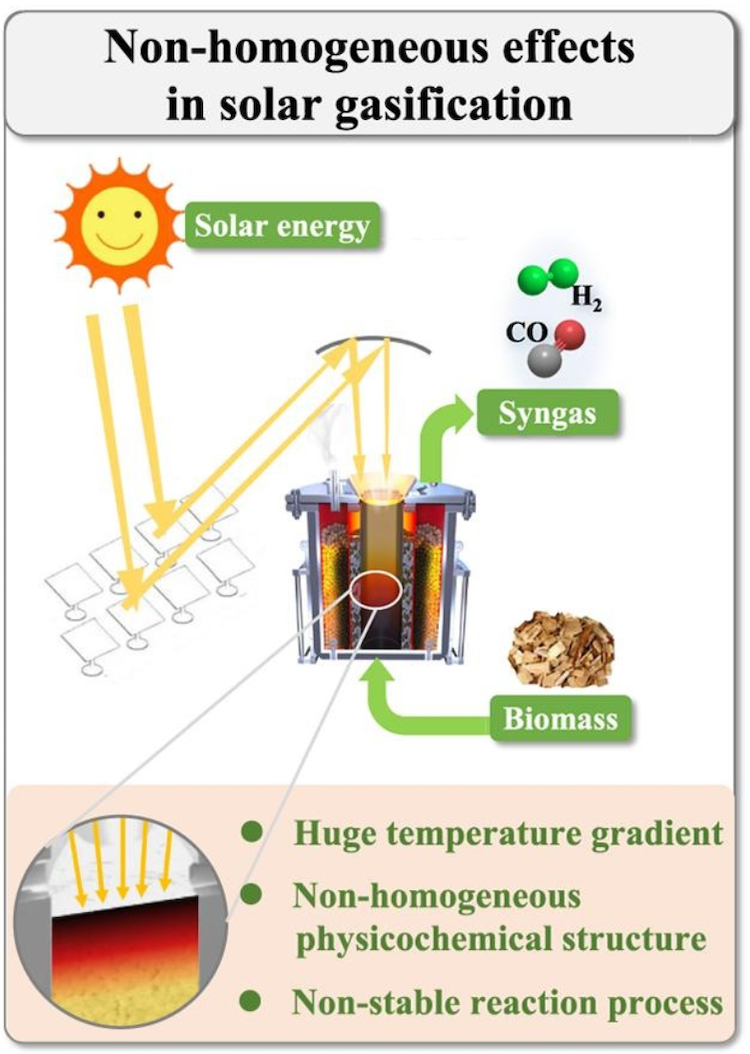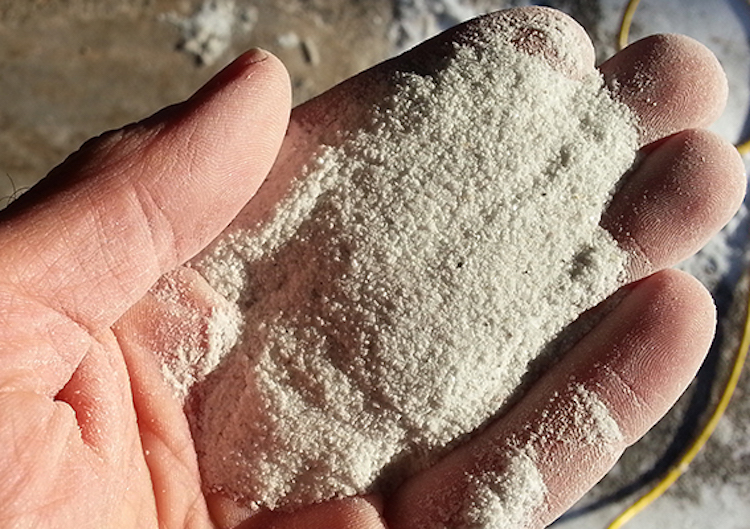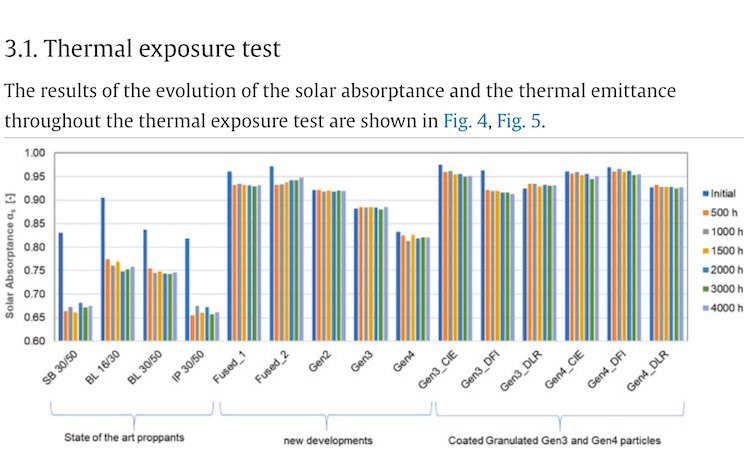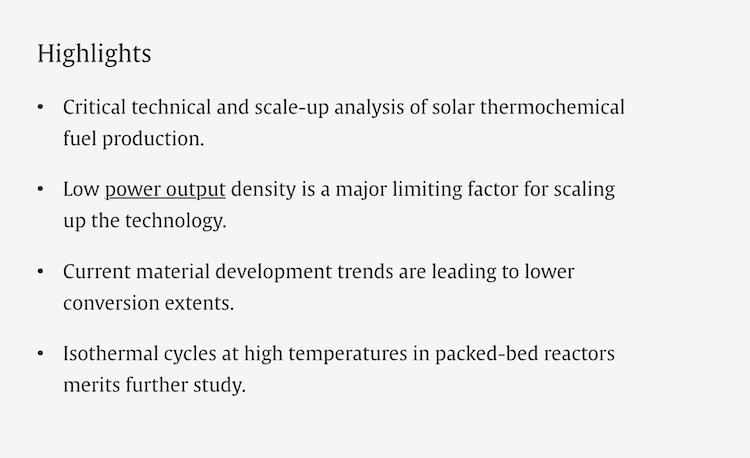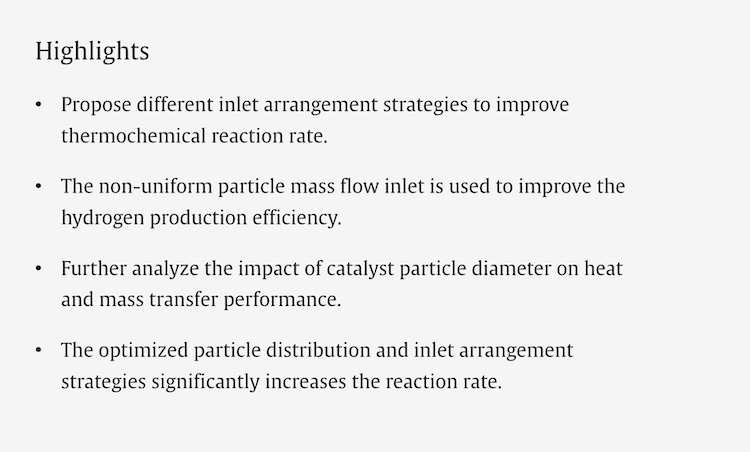Abstract This study investigates the dry reforming of methane (DRM) using solar energy to produce syngas at a pilot-scale level. A combined waste gas stream from a prominent South African petrochemical complex is considered as the system feed. A cryogenic distillation column operated at 30 bar with ceramic Berl saddle packing is found suitable for …
Published at Chemical Engineering Journal – Overlooked non-homogeneous effects in solar gasification of biomass
Abstract: Biomass gasification driven by solar energy is a potential route for the syngas production as well as storage of unsteady solar energy. However, the influences of the non-homogeneous effects caused by unidirectional concentrated solar radiation on the gasification process were overlooked in existing studies, which in turn led to the inaccuracy of the developed …
Published at Tribilogy International – Analysis of abrasion wear in particle storage and valve subsystem for falling particle concentrating solar power
Abstract: Solar energy capture and storage using falling solid particles are being explored for cost-effective next generation concentrating solar power systems. A critical consideration in this technology is the abrasion wear caused by the sliding of the particles under varying speed and pressure over component surfaces. This study presents computational modeling of a subsystem comprising …
Published at Renewable and Sustainable Energy Reviews – Multiscale textured solar absorber coatings for next-generation concentrating solar power
Abstract: A high-temperature stable solar absorber is crucial for next-generation (Gen3) concentrating solar power (CSP) plants, to enable high temperature operation, maximize power generation efficiency, and thereby reduce the levelized cost of energy. This study presents novel, fractal-textured solar absorber coatings whose multiscale feature scales effectively match the visible region of the solar spectrum, leading …
Published at Solar Energy Materials – Thermal and environmental durability of novel particles for Concentrated solar thermal technologies
Abstract: Bauxite-based proppants, commonly used in the fracking industry, are also employed in solid particle receiver types of Concentrated Solar Thermal (CST) technologies. However, fracking has been banned in many countries due to its environmental impact, leading to a decline in demand for proppants. As a result, the current proppant price of 1 €/kg is …
Published at Applied Thermal Engineering – Analysis of thermal and mechanical properties with inventory level of the molten salt storage tank in central receiver concentrating solar power plants
Abstract: Molten salt thermal energy storage (TES) tanks ensure steady power output of concentrating solar power (CSP) plants; however, recent tank failures have highlighted the need for further analysis. Current studies primarily focus on analyzing the molten salt flow, heat transfer, and thermal efficiency. Additionally, research on the latest tank structures is limited and lacks …
Published at Renewable and Sustainable Energy Reviews – Sources of solar tracking errors and correction strategies for heliostats
Abstract Heliostat fields represent the primary energy input for concentrating solar-thermal power based on power tower technology. They typically account for 40 %–50 % of the implementation cost of a power tower plant. Therefore, it is essential to optimize the solar tracking accuracy of heliostats to reduce solar tracking errors that lead to deviations in …
Published at Journal of Solar Energy Engineering – Heliostat Consortium: Gap Analysis on State of the Art in Wind Load Design
Abstract: Wind loads are a major driver of heliostat cost. Standardized methods and tools are needed for a more detailed understanding of the static and dynamic loads of a heliostat design. This will enable cost reduction of wind-dependent heliostats to avoid unnecessarily conservative heliostat designs and increase field efficiency and reliability to reduce the risk …
Published at Solar Compass – A critical perspective and analysis of two-step thermochemical fuel production cycles
Abstract: Two-step thermochemical fuel production cycles powered using concentrating solar systems offer a route to convert solar energy to chemical fuels. In this work, we offer a critical assessment of the state of the art, a detailed technical analysis of this technology in terms of theoretical limitations and potential performance, and potential paths forward in …
Published at Applied Thermal Engineering – Investigations of inlet arrangement strategies and particle parameters on thermochemical performance in falling particle solar reactors
Abstract: The reformation of methane to hydrogen and steam in a falling particle solar reactor (FPSR) is a promising method to use the solar energy, which converts solar energy into chemical energy. FPSR has higher operation temperature, higher pressure bearing capacity and more direct heat energy storage than those of traditional reactor. However, due to …


